
Globalstar Network
Communications coverage over most land masses
About the Globalstar (and SPOT) Network
Globalstar has offered satellite voice and data coverage in most of the world since 1999. Globlastar phones look a lot like mobile or landline phones with which you're familiar, the difference is that they can operate virtually anywhere, carrying your call or data over an exceptionally clear, secure satellite signal.
The Low Earth Orbiting (LEO) satellites used within the Globalstar system allows users to enjoy great call quality and no perceptible voice delay (latency), and Globlastar phones are among the smallest and most lightweight and affordable satellite phones available. A popular feature of Globalstar phones is that users receive a US-based phone number.
How Globalstar Coverage Works
The Globalstar satellites pick up signals from over 80% of the Earth's surface -- everywhere except the extreme polar regions and some mid-ocean regions. Its second-generation constellation enables several satellites to pick up a call, and this helps assure that the call is not dropped even if a phone moves out of sight of one of the satellites. As soon as a second satellite picks up the signal and connects with the same terrestrial gateway, it begins to simultaneously transmit. If buildings or terrain block your phone signal, this "soft-handoff" prevents call interruption.
TIP: Globalstar phones operate over the Globalstar network coverage area. SPOT devices operate over the SPOT network coverage area.
Coverage Maps
Globalstar Voice Coverage Map
Globalstar offers roaming in over 110 countries serving 90% of the world's population.
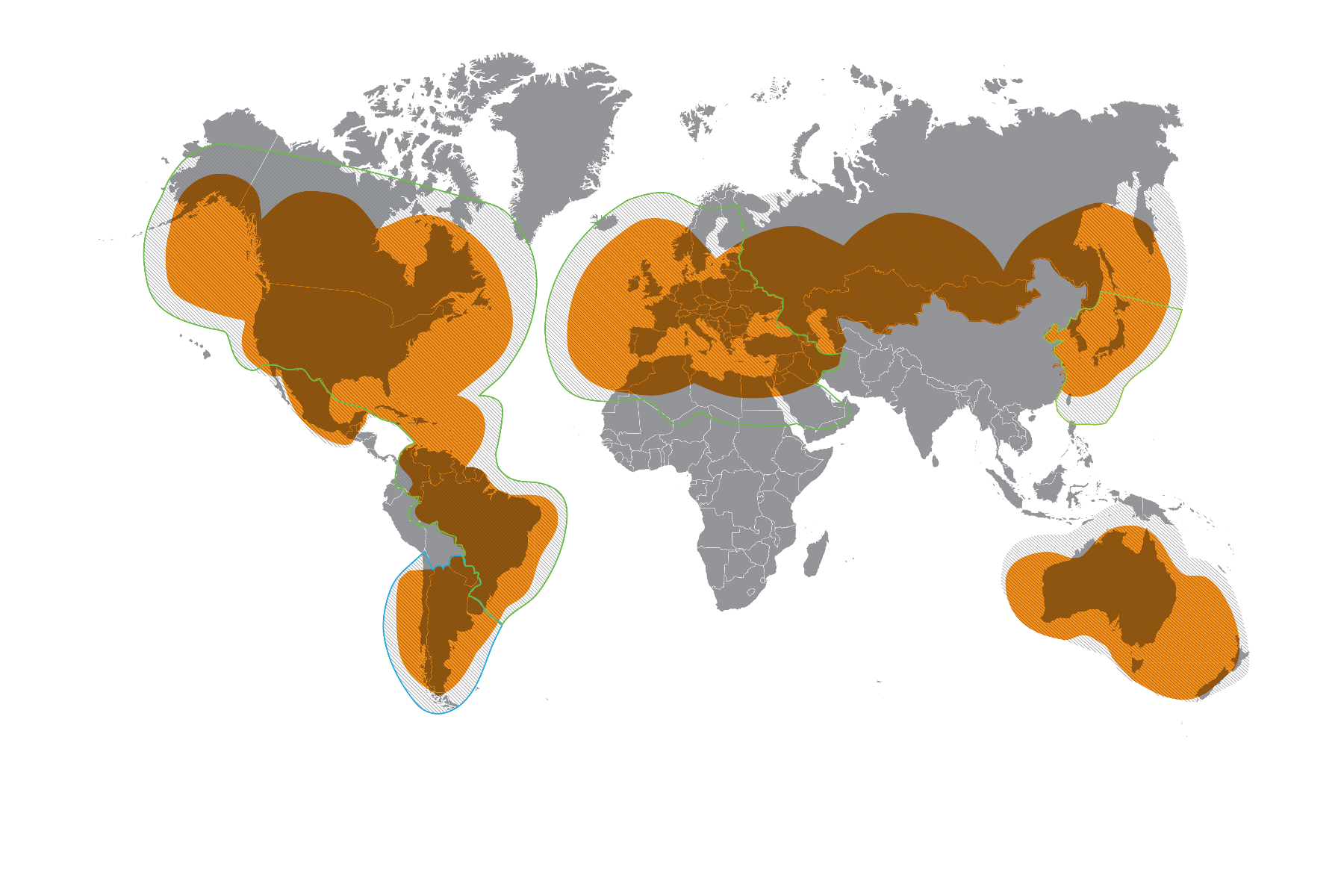

Primary Coverage

Fringe Coverage
(Customers should expect to experience weakest signal)

Temporarily Out of Service
Temporarily Out of Service Customers who have purchased their SPOT Global Phone/Globalstar phone outside of this area: Roaming is not currently available when traveling to the following countries and surrounding ocean areas: Argentina, Chile, Uruguay, Paraguay and Antarctica. Your phone will not work in these areas, however we are working toward resolving this.

Home Zone
Within the Home Zone, Globalstar North American customers can freely roam without incurring additional airtime costs. This map is intended to highlight Home Zone coverage for Orbit and Galaxy customers in North America. Coverage is subject to change without notice.
SPOT Coverage Map
SPOT has coverage over most land masses.
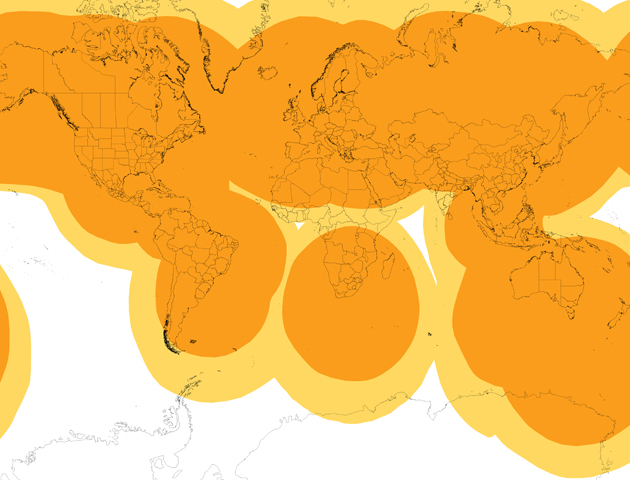
96% or better probability of successfully sending a single message within 20 minutes*
Reduced coverage available within a 20 minute period*
Why choose Globalstar...
Globalstar's innovative, yet proven technology, delivers higher dependability, stronger voice clarity and lower costs than other providers.
Pros
- Near global (except Polar Regions)
- Good quality of service; fewer dropped calls
- Low latency
- Accessible price point
- Good rates for calls to the US and Caribbean
Cons
- Coverage gaps
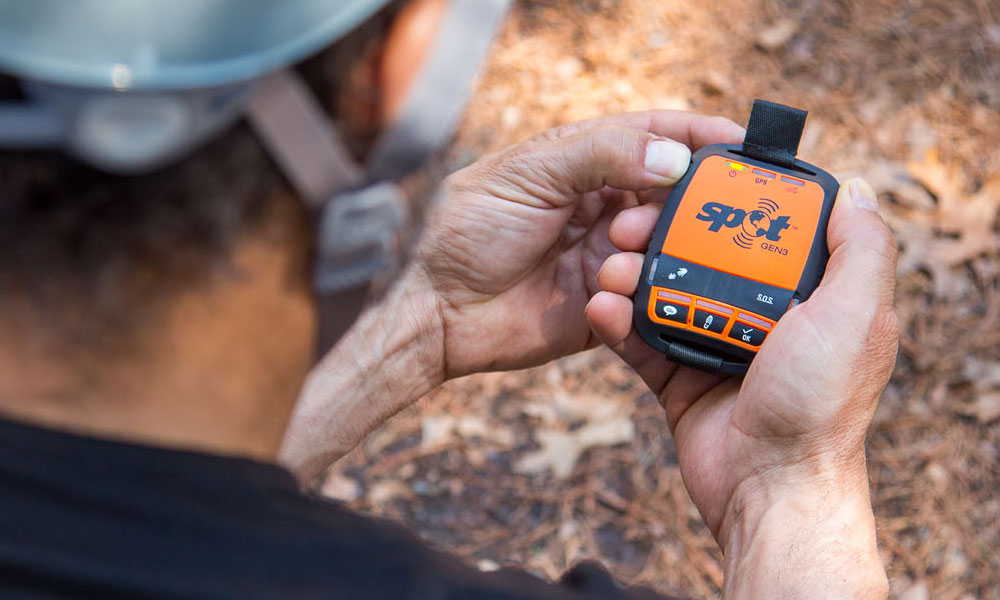
Globalstar Devices & Accessories
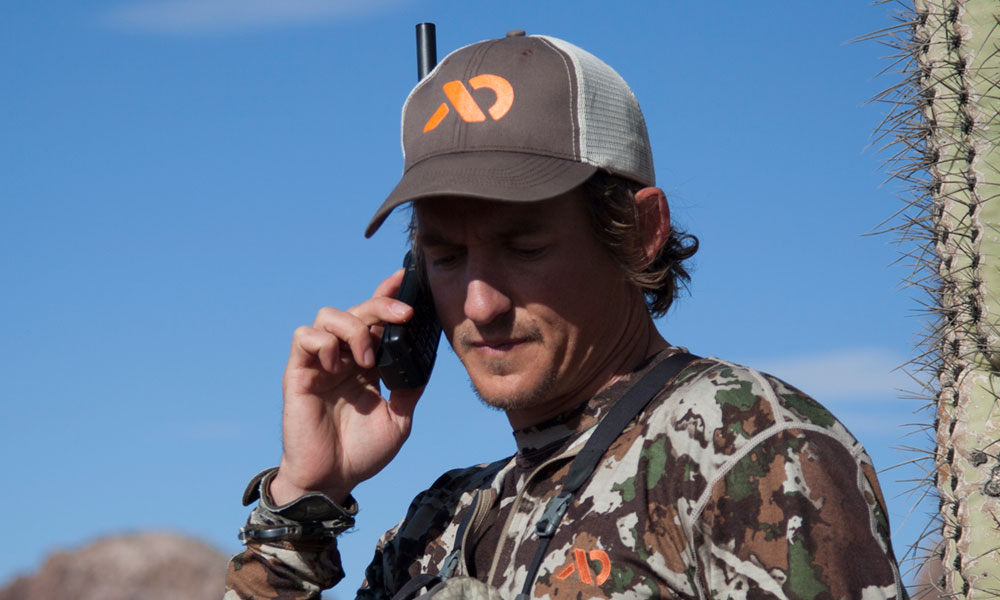
Globalstar Airtime Options
How to Connect to the Globalstar Network
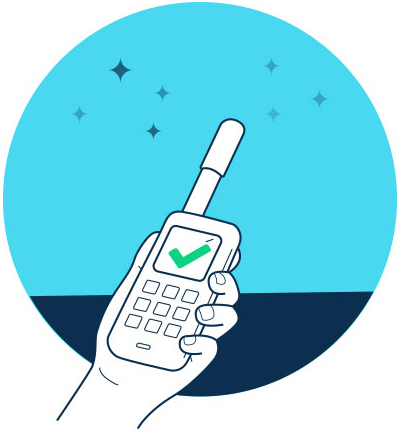
Best
Use your Globalstar satellite phone with the antenna extended in an open area where the antenna has an unobstructed 360° view of the sky.
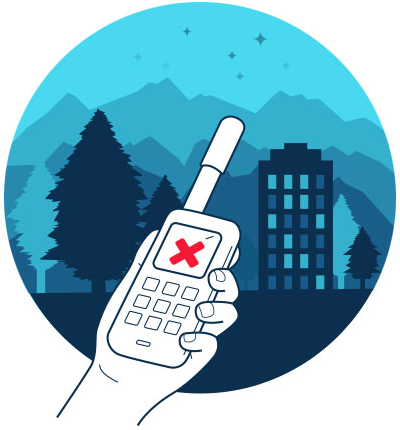
Avoid
Avoid using your satellite phone near large buildings, trees or mountains as these can obstruct line of sight with the satellites.
Satellites are constantly moving so if you are using a satellite phone in an area with some obstructions and some open sky, it may just take a bit longer to establish a connection, or calls might drop as the satellite passes behind the obstruction.
FAQS
How can I view/find my Globalstar phone number?
How do I make a call to a landline or cellular number from a Globalstar phone?
- Example: 1 (area code/city code) (phone number)
- Example: 1 555 123 4567
How do I make a call to another Globalstar phone number?
- Example: 1 245 1234567
Can I send and receive text messages using a Globalstar phone?
How do I receive calls on my Globalstar phone?
How do contacts dial my Globalstar phone number?
- Example: 1 245 1234567
